Science Week -
Preschool
The Preschool Team

Science Week -
Preschool
The Preschool Team
*** Questioning *** Hypothesising *** Molecules *** Experiments *** Observing *** Chemical Reaction *** Friction *** Safety *** Eruption *** Static *** Discussing*** Understanding *** Building Vocabulary ***
Our preschool children have discovered the world of science this week with a hands on approach as they celebrated National Science Week. They also took the opportunity to extend their key word sign vocabulary.


Throughout the week the preschool curriculum included several science experiments for the children to perform, observe, discuss and build their understand of the world.
Static Salt and Pepper Dance
A blown balloon rubbed in a friend's hair, then held above salt and pepper on a plate creates a reaction that observes the salt and pepper to rise and 'dance'. A hands on experiment with immediate results to observe.

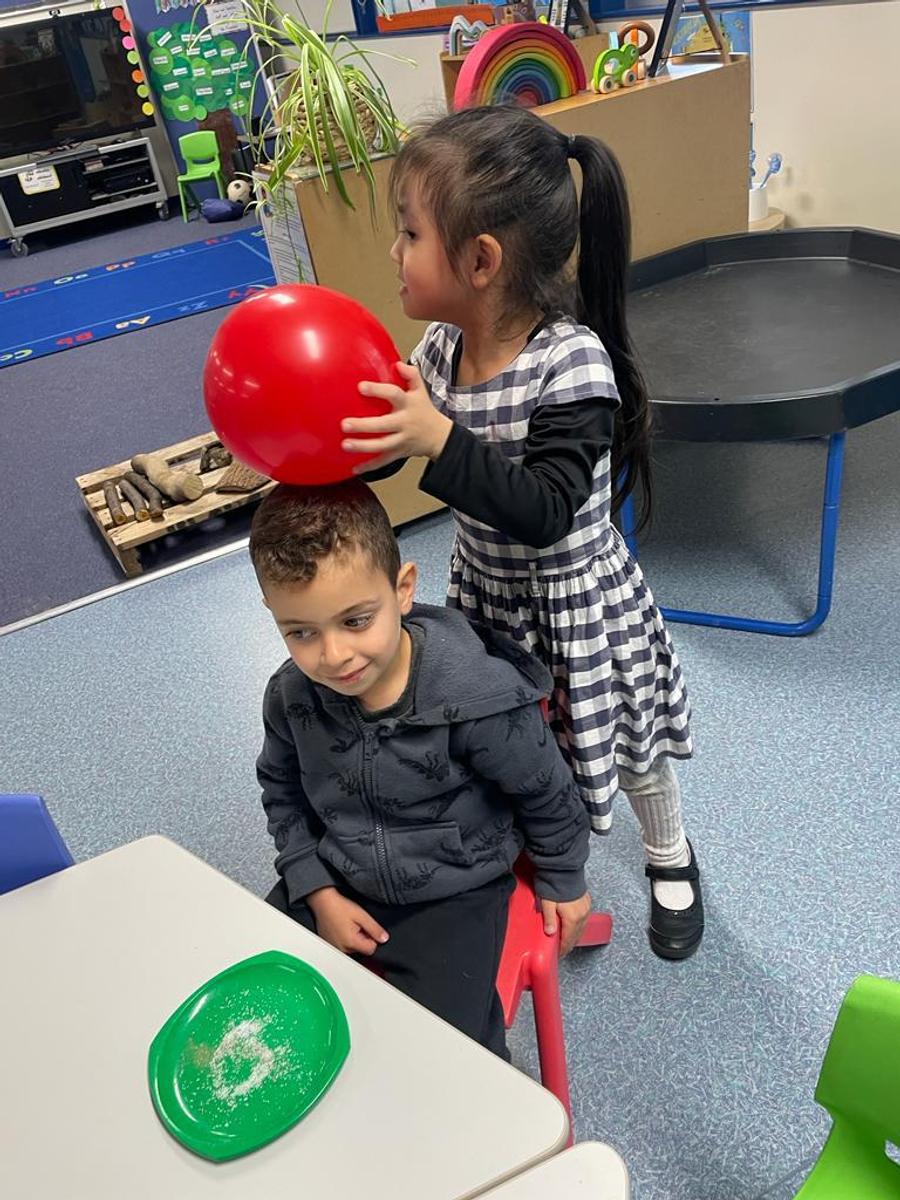


A Skittle Rainbow
A line of skittles around the edge of a plate, then pour water onto the plate. Watch and observe the reaction as the skittles and water mix to form a rainbow design.
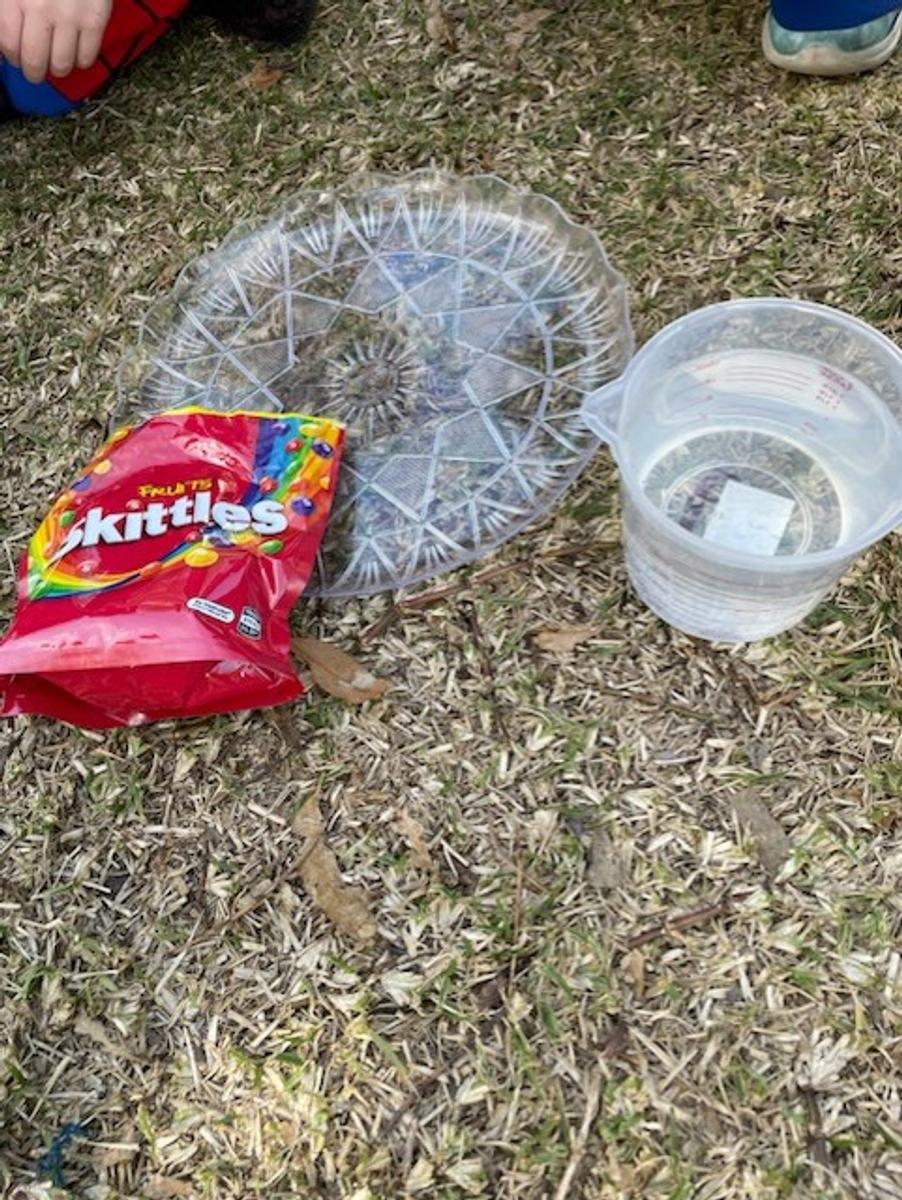

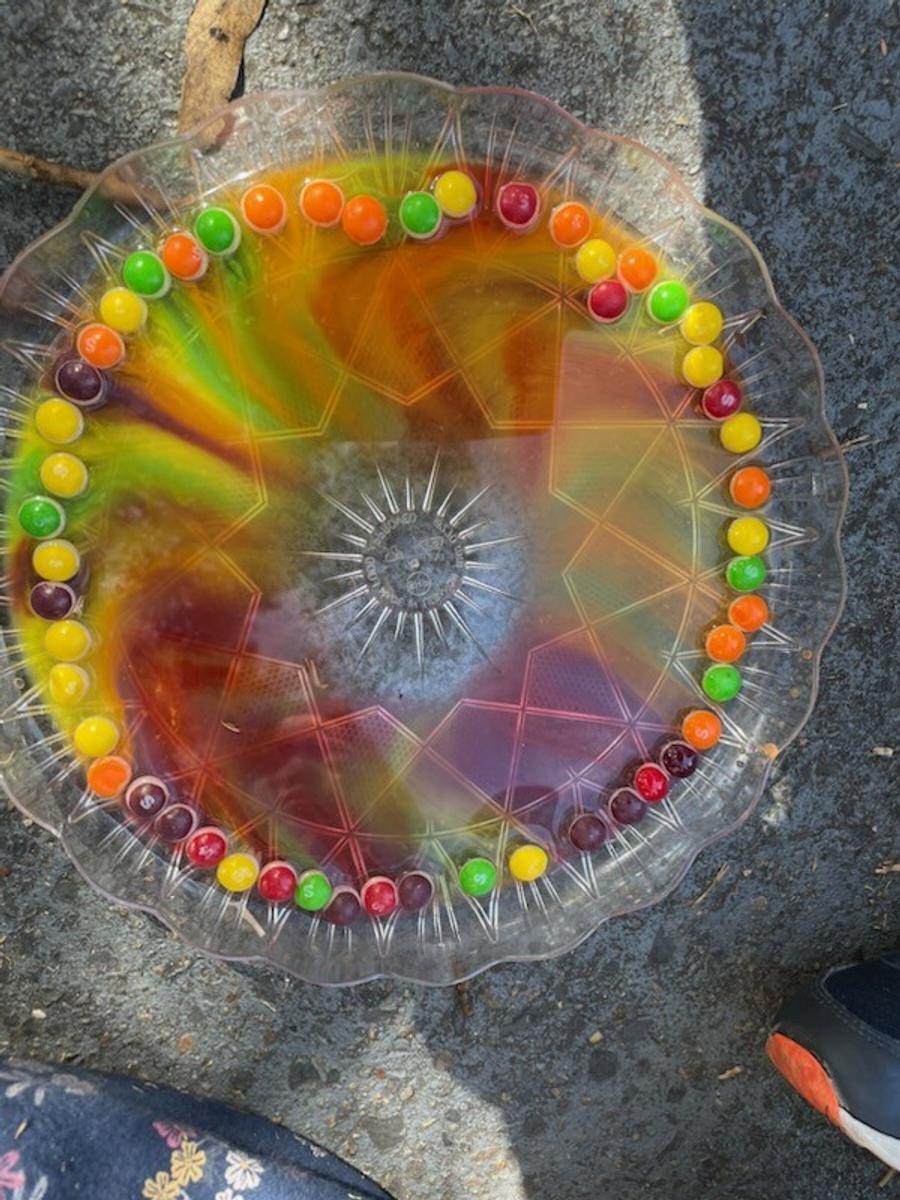



Can a Chemical Reaction Blow Up A Balloon?
A reused bottle, bi-carb soda and vinegar. Observe the chemical reaction which creates a gas to fill the balloon with air and blow it up. The children hypothesized, tested and observed the difference between 3 spoons of bi-carb soda v's 4 spoons of bi-carb soda. Which one blew the balloon to a larger size?

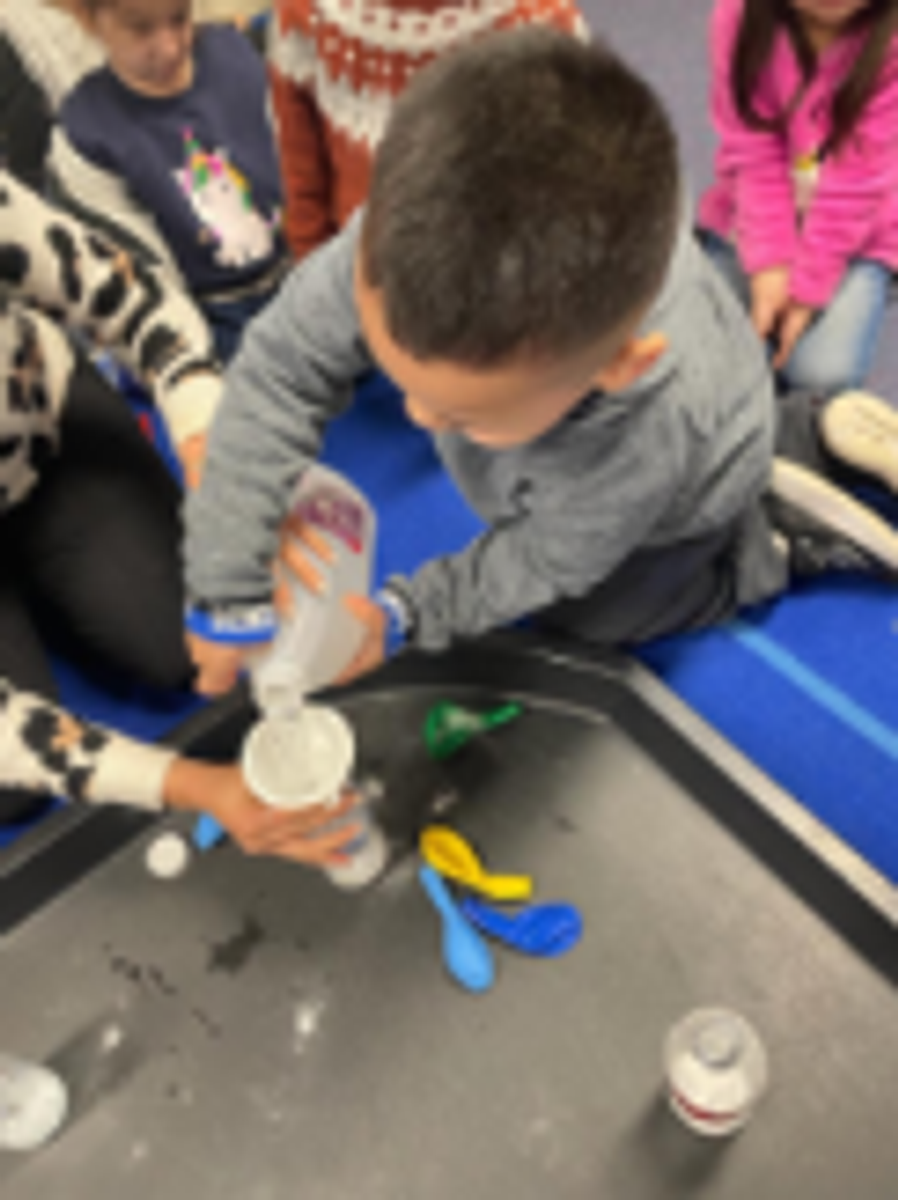
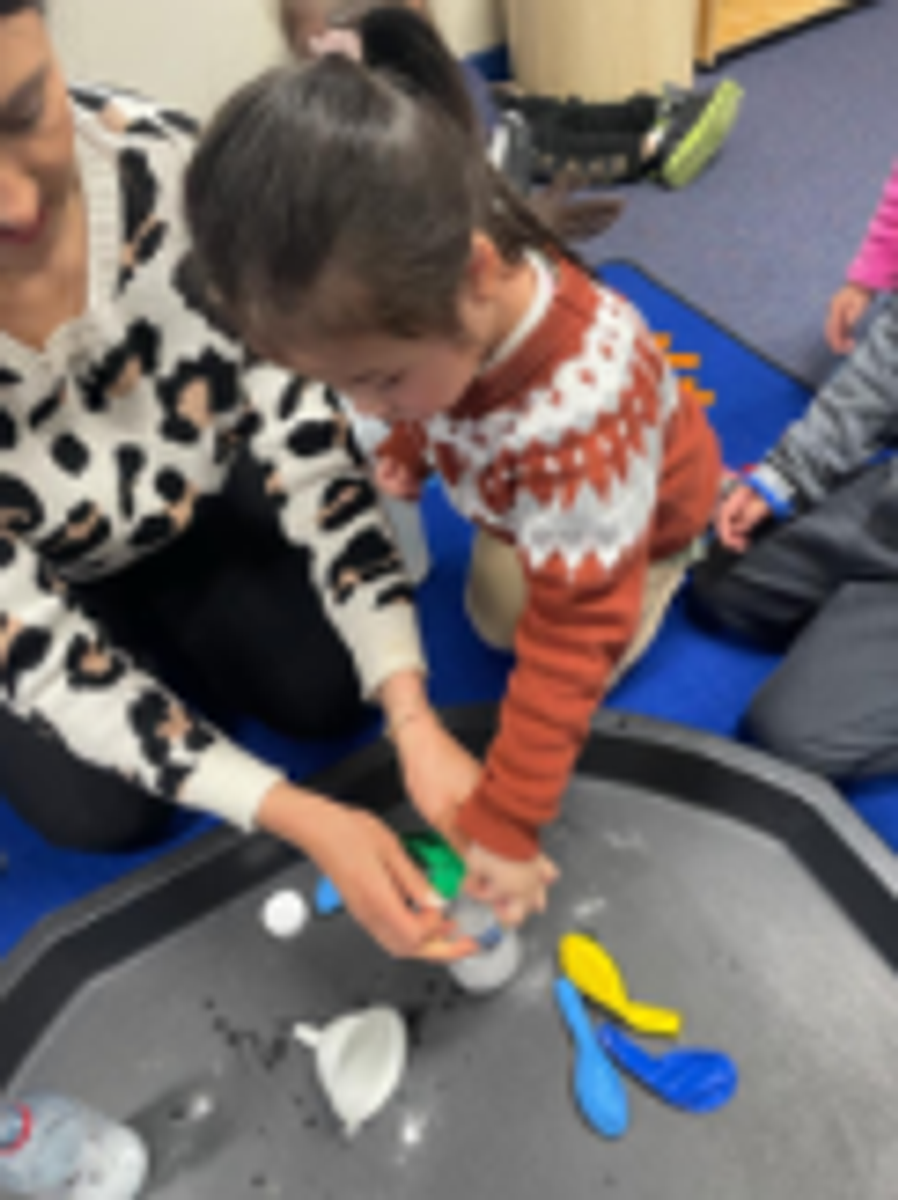
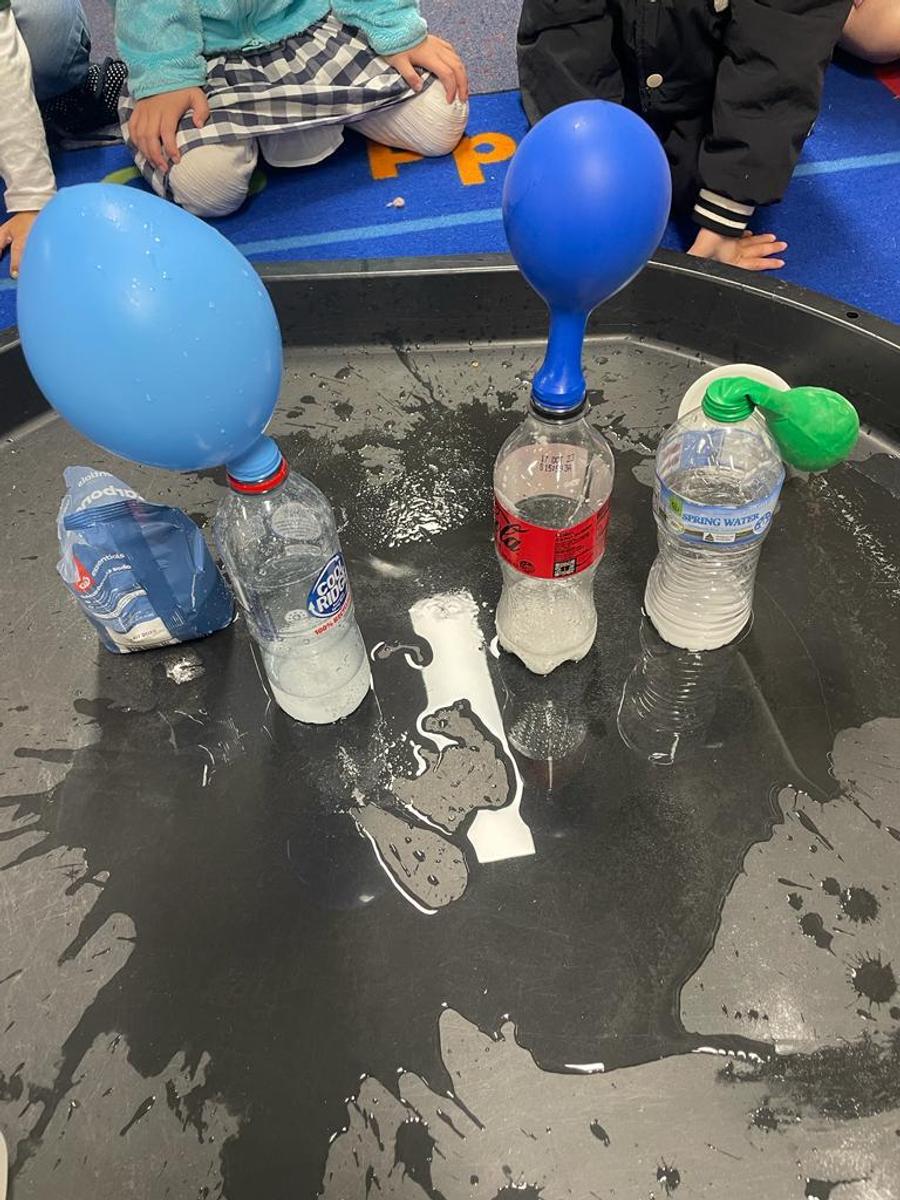
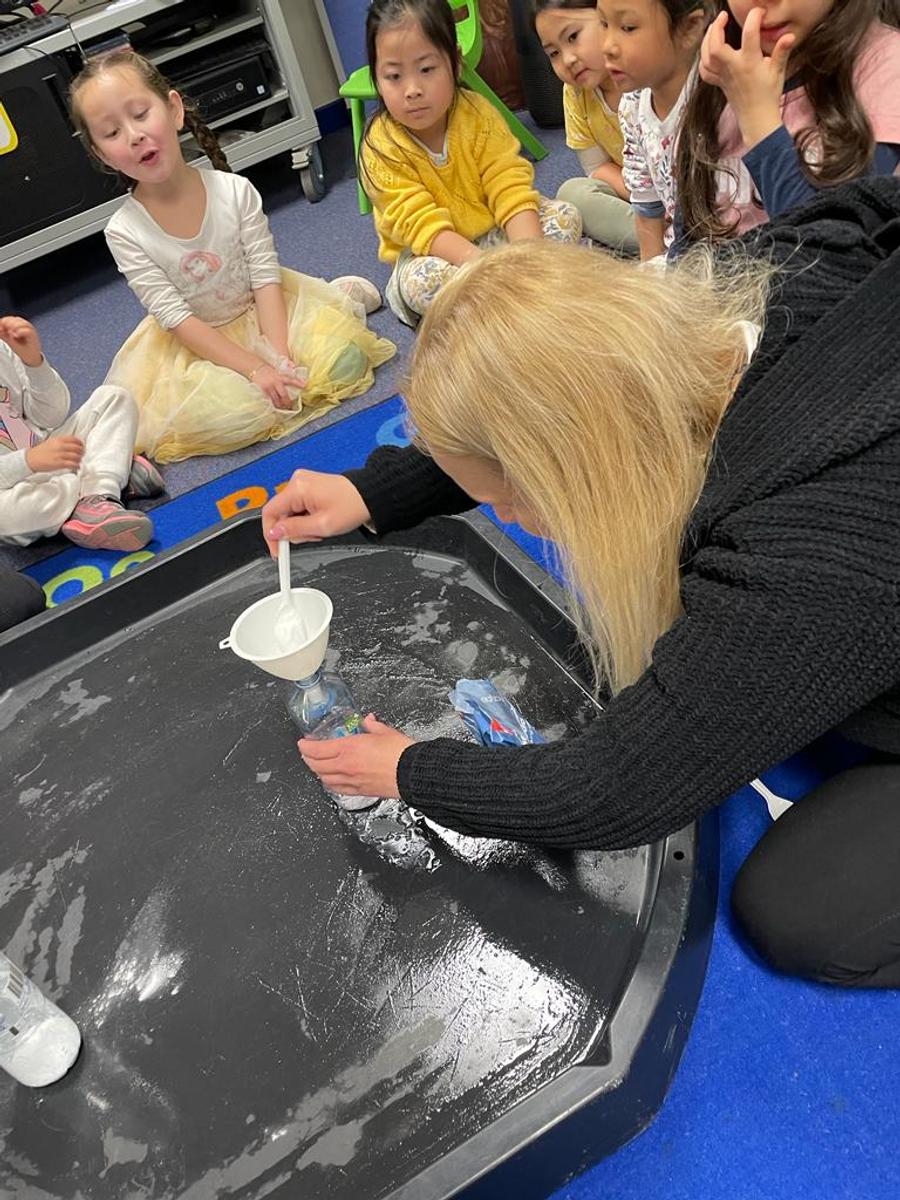





Can You Stick Pencils Through A Bag Of Water Without The Water Leaking?
Estimate, test, observe, reason and discuss. Our preschoolers tested this strategy out and learned that because the bag is made of a polymer – which is long, flexible chains of molecules, when the pencil poked through the bag, the molecules spread apart and sealed themselves around the pencil. No Leaks!
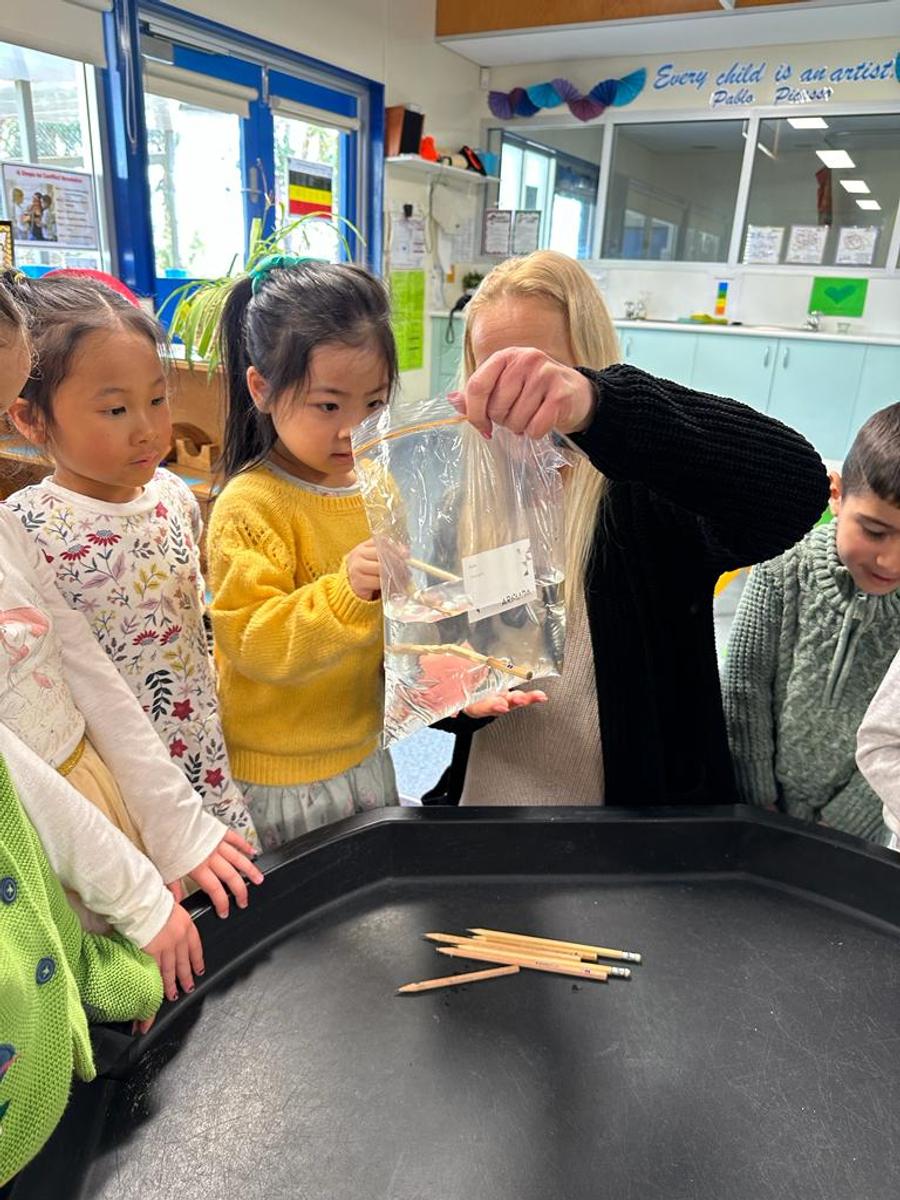
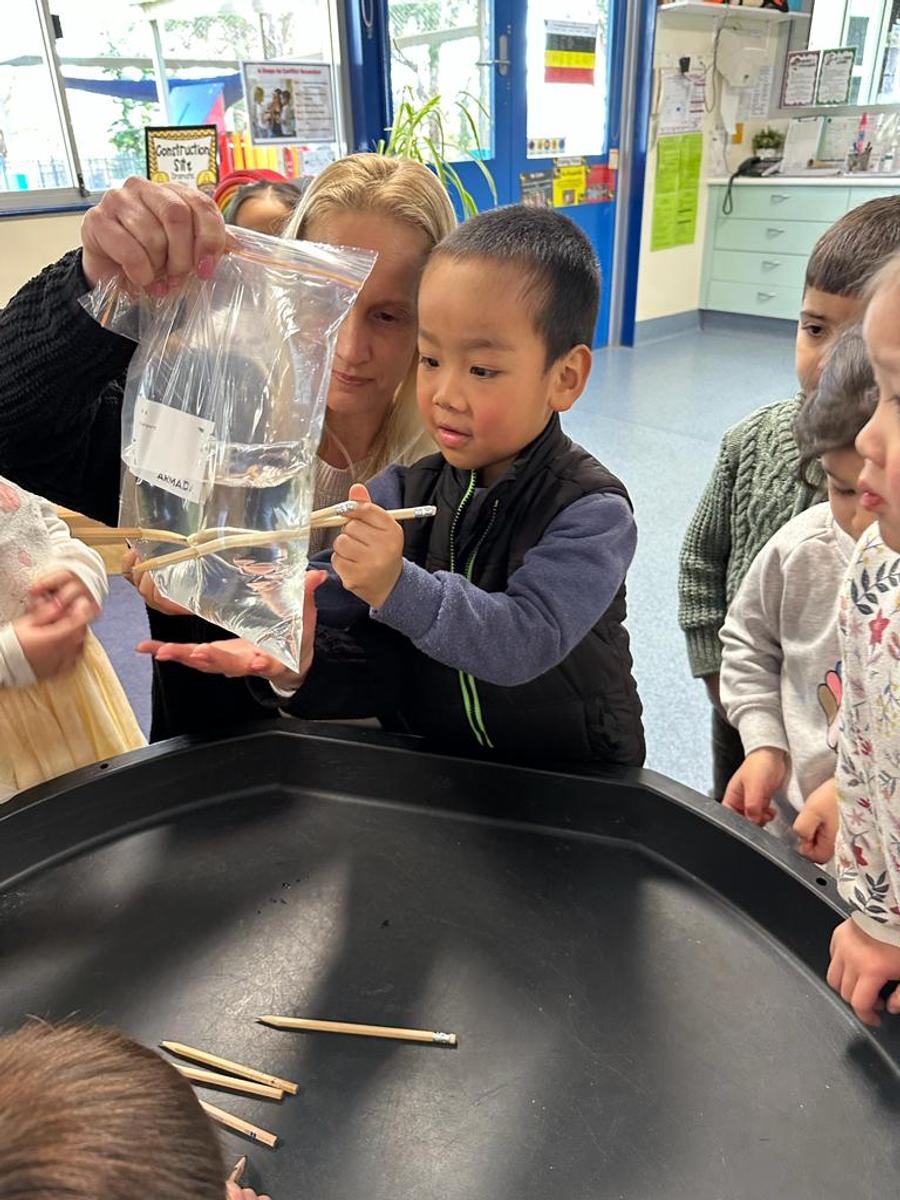


But what happens when we pull the pencils out? Oops, the seal was broken, leaks were created.
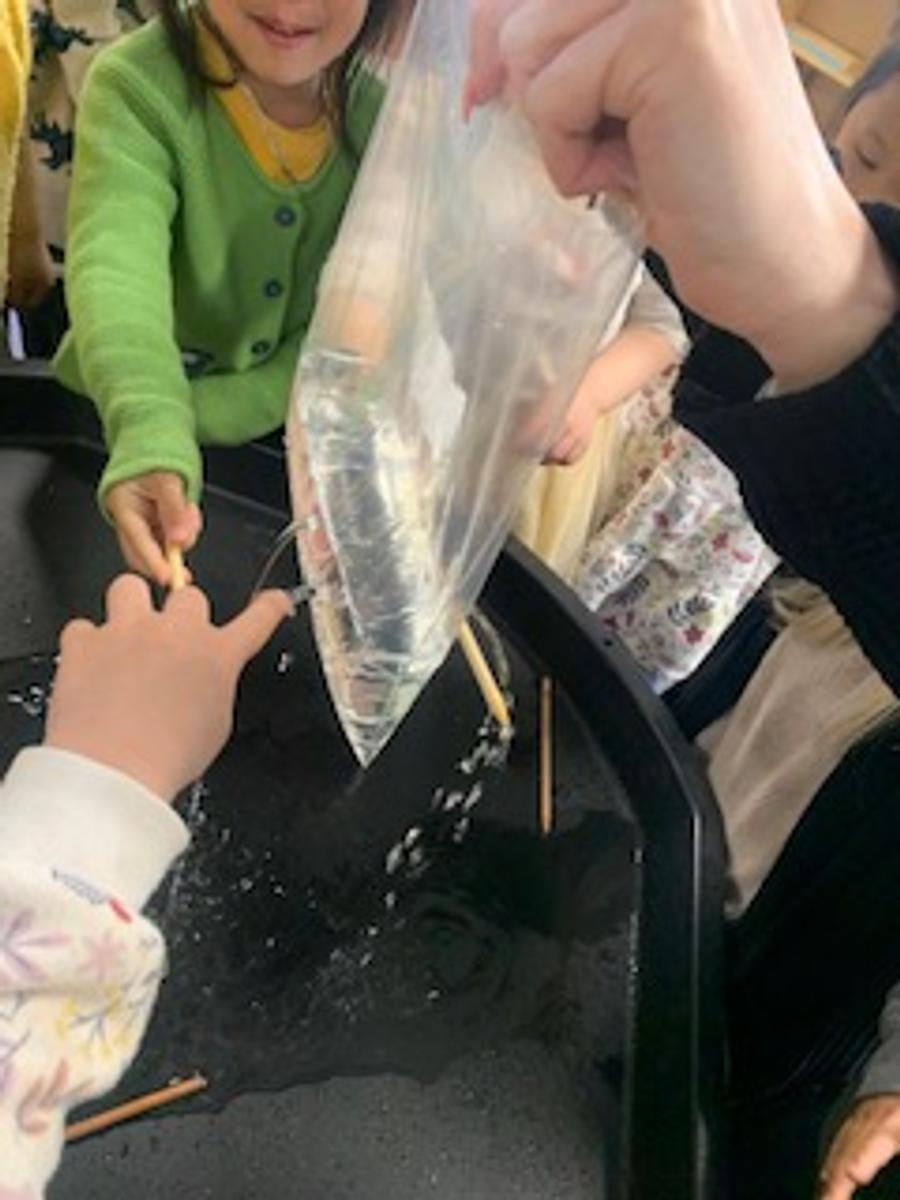

Volcanoes in the Sandpit
Retesting the chemical reaction between bi-carb soda and vinegar, this experiment was performed in the sandpit. A reused bottle buried in a pile of sand to represent a volcano, then bi-carb and food colouring. What happens when we add vinegar? That's right, lava spews from the tops, just like a real volcano. We then tested mixing colours to see how the colour of the lava changed.
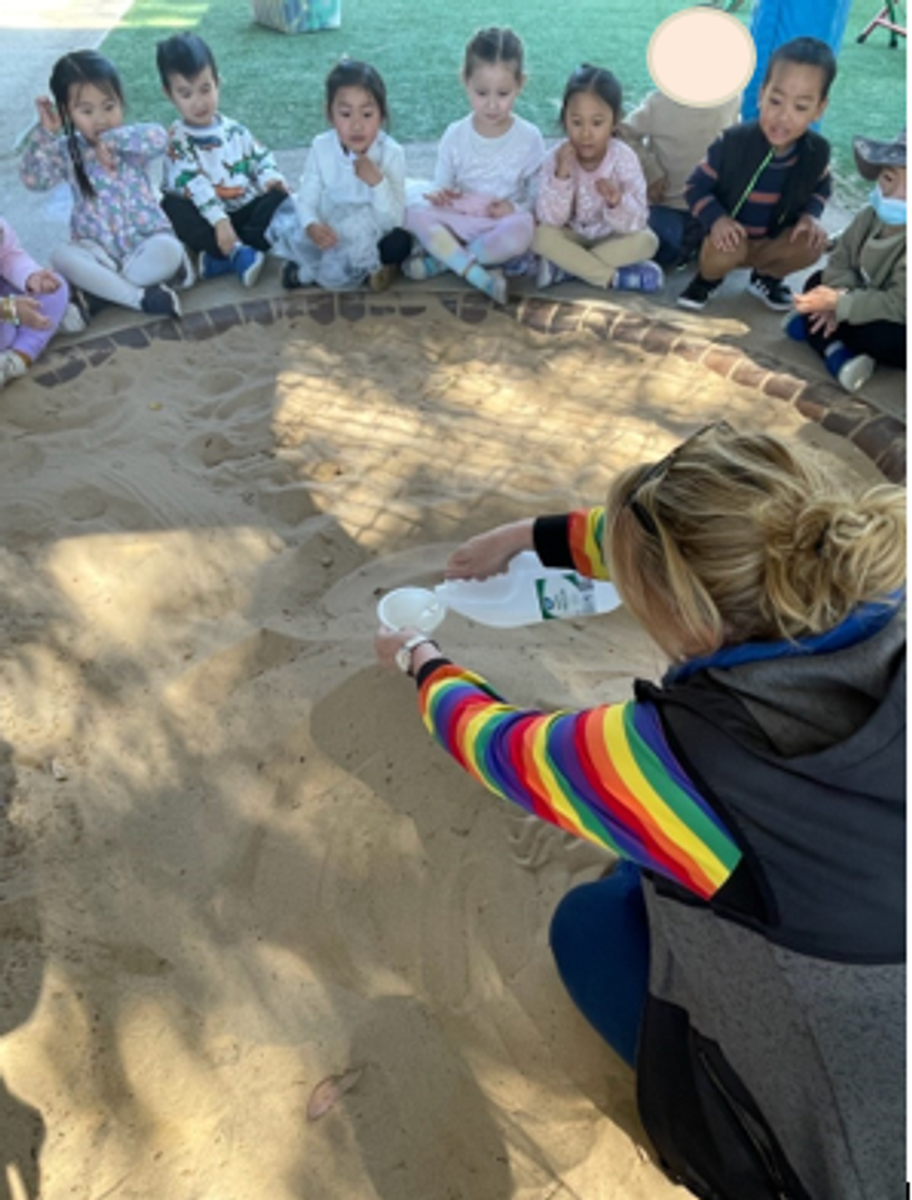
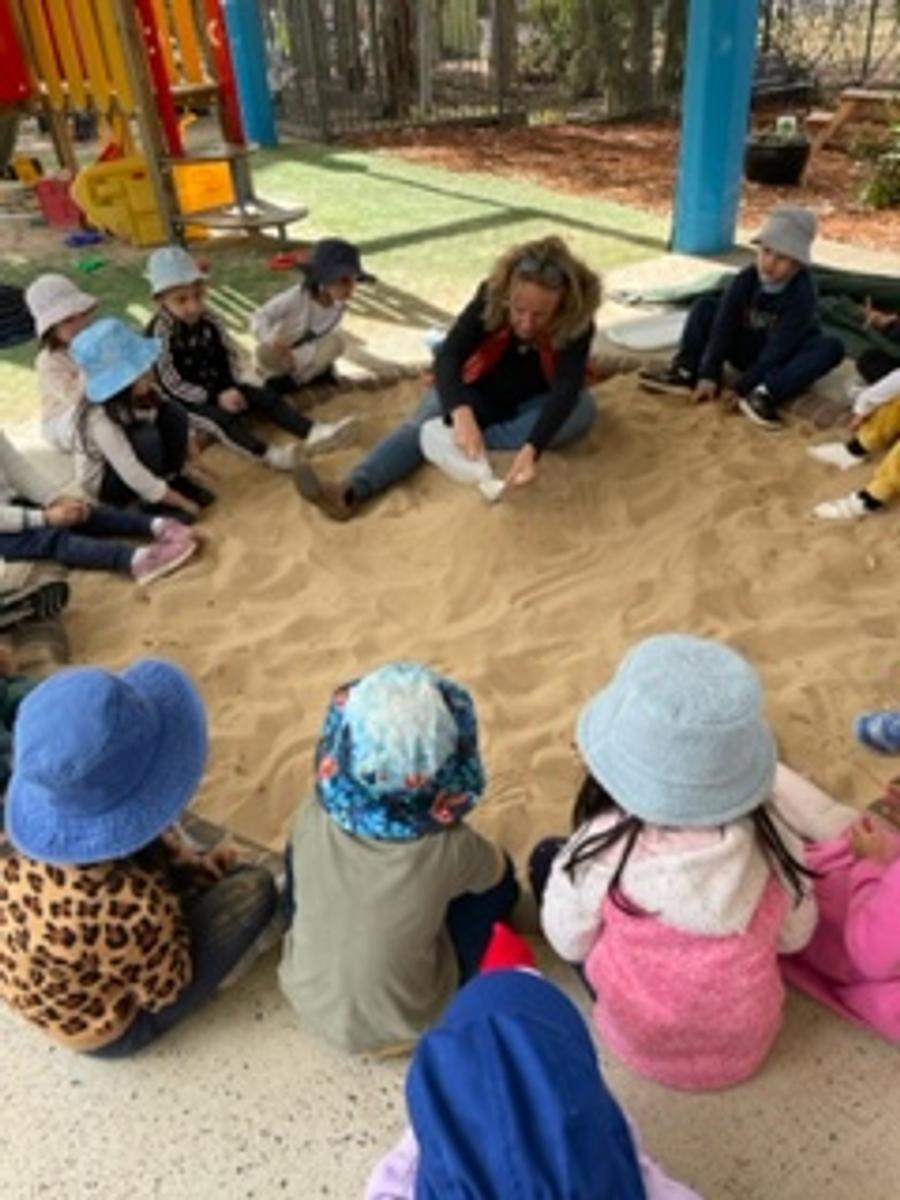

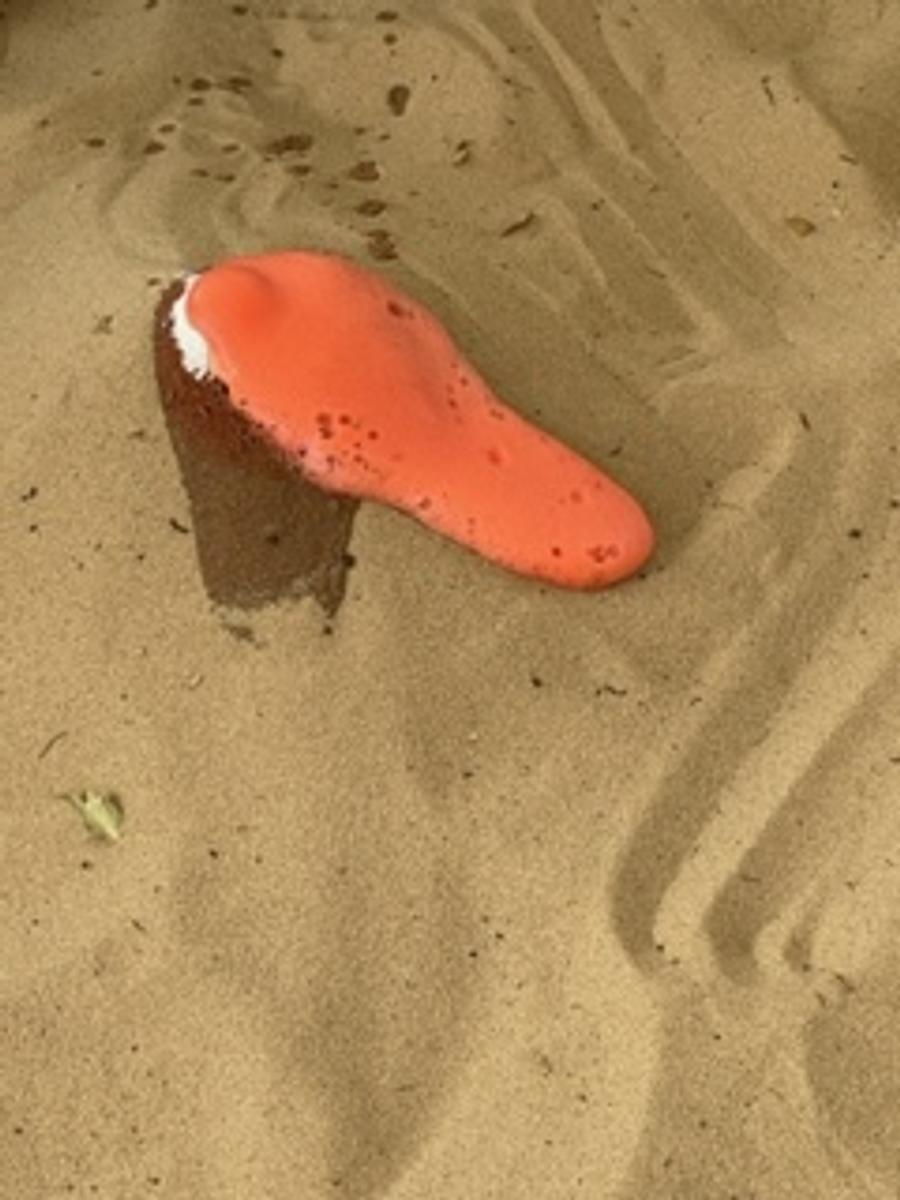




This experiment allowed us the opportunity to discuss the importance of observing safety measures when performing science experiments. Although the lava in our experiment was not hot, it could be, and vinegar in our eyes would probably hurt. Therefore it was important not to be tempted to put our face over the top of the bottle to see if it was about to erupt - we knew it could erupt into our face - ouch!
So many concepts to observe, new words to learn, hypothesis to be made and understandings to grasp. We have had a great week of learning as scientists.
Early Years Learning Framework Version 2
OUTCOME 4: CHILDREN ARE CONFIDENT AND INVOLVED LEARNERS
• Children develop a growth mindset and learning dispositions such as curiosity, cooperation, confidence, creativity, commitment, enthusiasm, persistence, imagination and reflexivity
• Children develop a range of learning and thinking skills and processes such as problem solving, inquiry, experimentation, hypothesising, researching and investigating
• Children transfer and adapt what they have learned from one context to another
• Children resource their own learning through connecting with people, places, technologies and natural and processed materials